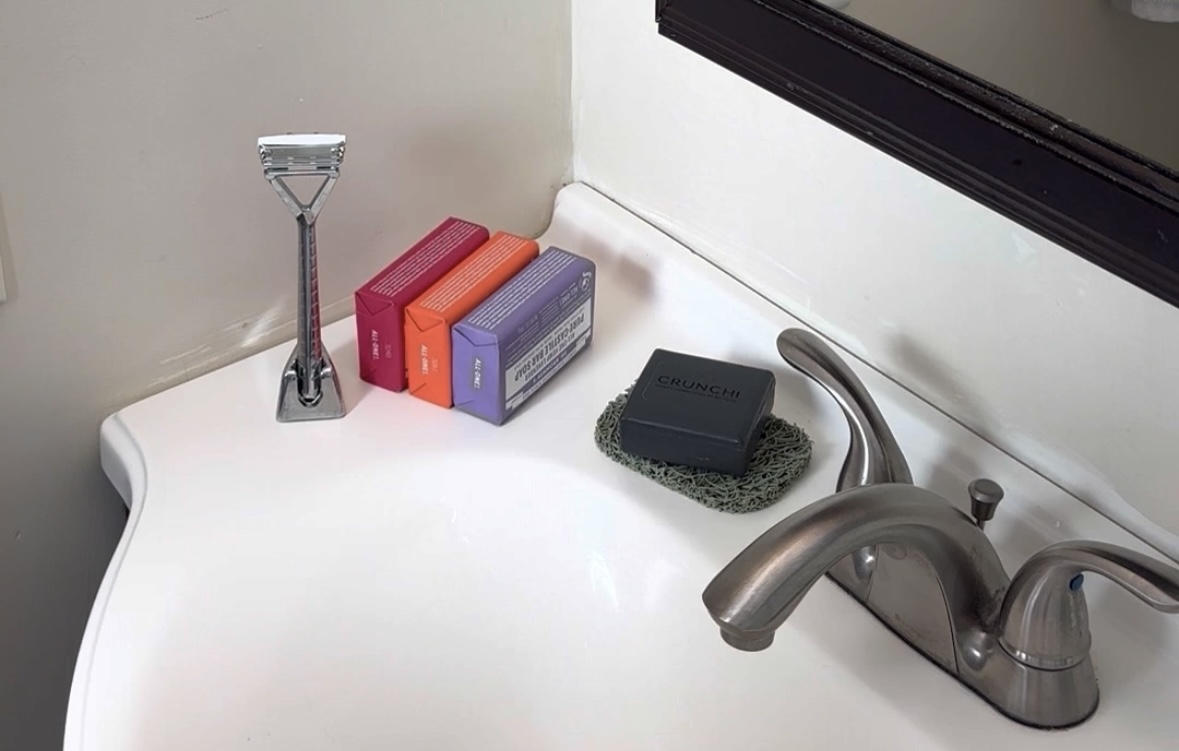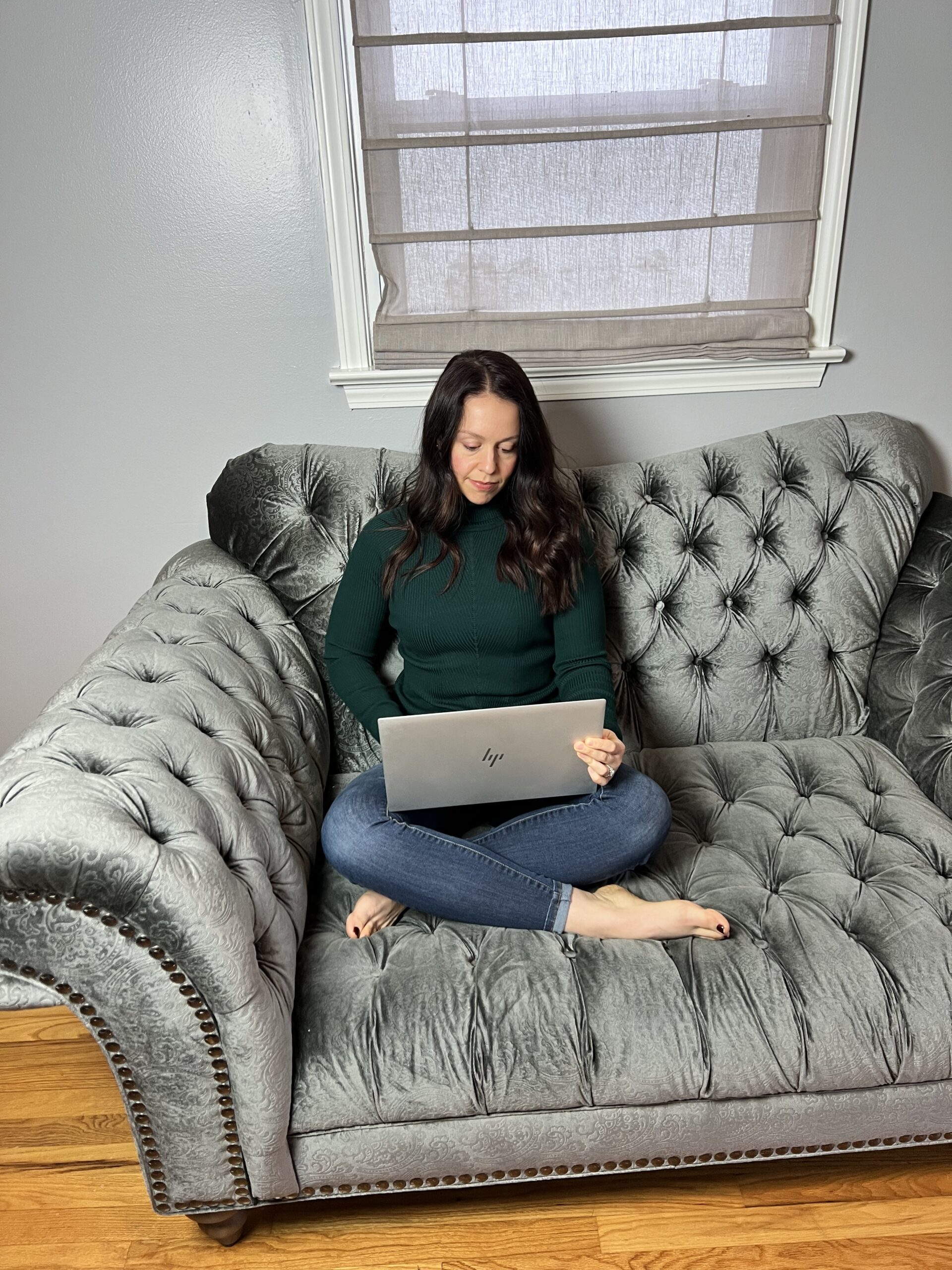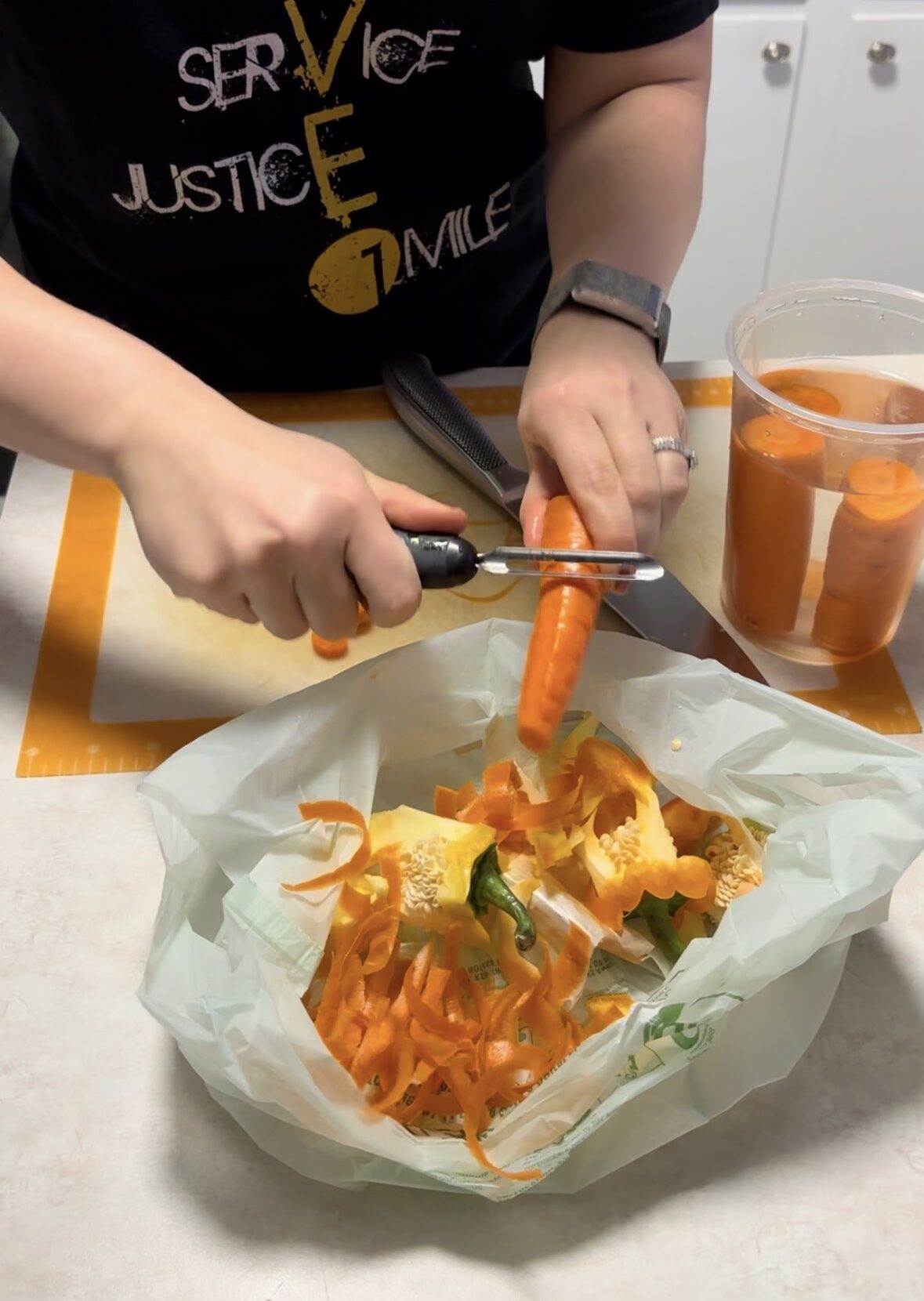The evolution of my shower routine.
If you had mentioned the word shower 4+ years ago, my brain would picture a 10+ minute shower with hot water and great water pressure. I would have pictured multiple bottles of your most standard, cheap brands of body wash, shampoo, conditioner, shaving cream, face wash, and a plastic razor. My showers would always be at night – washing away the day, including my hair, as part of my nightly routine.
Today, my showers look almost completely opposite. They’re shorter and much colder with more bars than bottles. They’re almost always in the morning after a workout. I never wash my hair two days in a row, more like twice per week. Until now as I’m writing this post, I didn’t realize how much my shower habits had changed. Over the past few years I made small gradual changes. Let’s dive into why I made the changes I did, and how you might be able to form healthier, more environmentally conscious, and more responsible shower habits.
Habit #1: Shorten your shower.
What are the effects of long showers? The primary effects are related to the environment and water conservation. A standard shower head has a water flow of approximately 2.5 gallons per minute. If you’re taking a 10-minute shower, that means you’re using 25 gallons of water. However, if you’re taking a 3-minute shower, that means you’re using 7.5 gallons of water. I get it – a 3-minute shower is impossible when it’s time for an “everything shower”. There’s no way you can fit a 2x shampoo, condition, shave, etc. into 3 minutes, and neither can I! So, how do you take a fast shower? There are a few other options to consider if you want to reduce your water usage without sacrificing your necessary personal hygiene habits.
- Invest in a low-flow shower head. A low-flow shower head reduces water flow to at least 2 gallons per minute to be certified as a “WaterSense” shower head by the EPA standard. This means your 10-minute shower will only use 20 gallons instead of 25. You’ll reduce your water usage by 20% on average by investing in one of these!
- Turn off the water when you’re not using it. I usually shampoo my hair twice, then condition my hair. For the best results I know it’s ideal to leave the products on my hair for a minute or two before rinsing it out. So I’m actively trying to avoid the water for a few minutes during my shower. It’s actually easier and more environmentally friendly to just shut the water off during these periods to avoid wasting water. After you’ve lathered up your legs, you can also shut off the water while you’re actively shaving.
- Collect the water to use for something else. If you hate the thought of turning the water off and back on, you could keep a bucket in the shower to collect the extra water that would normally just run down the drain. This would be particularly great for people with a lot of houseplants or garden plants to water. Make sure to collect clean water without a bunch of soap residue if you’re going to do this.
- Lastly, make your showers colder! Keep reading onto habit #2 to learn more, but I think we can agree our shower will be shorter if it’s colder.
Habit #2: Cool down your shower temperature.
I know, some days there is nothing better than a long, hot shower after a rough day. Cold showers (and cold plunges) are becoming increasingly popular in the wellness space. Exposing yourself to extreme hot or cold temperatures for small amounts of time seems to have a variety of positive benefits. For me, I feel that I have more energy for my day after taking a cold shower in the morning.
I’m also an avid WHOOP fitness band user. Since I started incorporating cold showers into my routine, WHOOP has given me the data to back up my claims. Cold showers are consistently one of my top recovery behaviors. If you’re unfamiliar with WHOOP, it’s a fitness band that tracks various physical activity and sleep metrics along with a calculated “Recovery” score for the day. “Recovery” can be a helpful tool in planning your workouts to either challenge yourself or to avoid overreaching. WHOOP also allows users to enter information into a journal each morning about the previous day. Users can record if they took a cold shower, if they ate gluten, if they took a magnesium supplement, if they looked at a screen before bed, etc. and the app utilizes this data along with the other metrics it records to calculate how these behaviors impact your recovery score positively or negatively. As of today, cold showers have a positive impact in increasing my recovery score by about 6% on average.
Cold showers also make it easier for me to incorporate Habit #1. It’s hard for me to believe that shower temperature and length are not correlated for most people. If you’re taking hot showers, you may be spending more time (and using more water) than you think! Cold showers make it easier for me to turn off the water when I don’t need it (it’s actually a nice reprieve). They also encourage me to move a little faster and waste less water, while improving how I feel.
Habit #3: Lessen your shower frequency.
To be transparent, I usually take a daily shower, so hear me out with this one. One option to reduce water usage is certainly to shower less frequently but I’m not advocating for any unhygienic practices. Because I work out almost every day and I sweat in almost every workout, I shower almost every day. That’s just what works for me and my lifestyle. If it’s a rest day or I don’t sweat during a workout I likely will skip a shower that day. This habit is truthfully about spending less time in the shower and therefore conserving water. So another way to look at this is to decrease the frequency of the things you do in the shower.
- One option is to not wash your hair every day. I used to shampoo and condition my hair everyday. Even by the end of the day my hair would start to get greasy so I thought my hair was the kind that just needed to be washed everyday. My cousin is an amazing cosmetologist and of course has always told me to stop this habit. Over time I’ve gotten to the point where I wash my hair every 3-5 days. This range mostly depending on how sweaty my workouts are and what events I have that week. Dry shampoo was my best friend as I worked on building up my tolerance to washing less frequently. Now my hair is rarely greasy even on the third day so I rarely need to use dry shampoo. If you’re wondering how I get away with washing my hair less while still working out everyday, I usually will “rinse” my hair with just water in the shower and scrub my scalp. In almost all my workouts I sweat significantly and my hair always ends up wet and frizzy, so the “water rinse” is just like a reset for my hair so it can dry naturally. My cousin swears this isn’t needed and you could just blow dry the sweat and use dry shampoo. Maybe this is practical especially if you style your hair everyday. However, it feels cleaner to me to rinse it and let it dry naturally since I rarely style my hair.
- Another option is to not shave every day, or to stop shaving in the shower altogether. If you fill a small container with water, can you sit on the edge of your tub and shave with that water container and some soap rather than standing in the shower wasting 2.5 gallons of water per minute? I bet you can get away with using 1 gallon or less to shave your legs!
Habit #4: Minimize your hair care products.
Minimizing your hair care products doesn’t necessarily mean getting rid of all the products you love. Maybe that’s finding more concentrated products in order to use less and buy less frequently. Or maybe that’s switching from shampoo bottles to shampoo bars to reduce packaging. Did you know on average, popular brands of body washes, shampoos and conditioners sold in bottles contain around 80% water? This means we are wasting plastic packaging (imagine how small the bottles would be if you removed the water). We are also wasting transportation costs and emissions (imagine how many more small, water-less bottles you could fit in one truck).
Additionally, many popular brands include ingredients that are known as endocrine disruptors and skin sensitizers. Personal care ingredients and how they can affect us as users is a big topic and something I can’t fully dive into here, but I know for some people having a list of personal care ingredients to avoid can be helpful.
When it comes to shampoo and conditioner, I have only recently started investigating various shampoo and conditioner bars. Typically bars are more concentrated so they last longer and come in paper wrapping which can easily be recycled. I’ve heard that it can take some time to find a brand of bar shampoo and conditioner that you like as it is heavily dependent on your individual hair type. First on my list to try once I get through my current shampoo and conditioner is J.R.Liggett’s. I would also recommend investing in a soap holder with drainage holes. This will help your bar last longer and will also keep your shower cleaner.
If you find that bar shampoo and conditioner is not for you, there are plenty of high quality liquid shampoos and conditioners out there. You may even be able to find a local refill shop (here’s a good resource to find one in your state) that allows you to bring your own container and fill it from their bulk supply to minimize packaging waste!
Otherwise, opt for something that is concentrated. This will ultimately allow the product to last longer and prevent unnecessary waste from packaging and shipping mostly water.
Lastly, regardless of which option works best for you, make sure to clean and recycle your plastic bottles or paper wrapping.
Habit #5: Minimize your body care products.
Many of the same minimization options we discussed in Habit #4 also apply here. Consider switching from liquid body wash in a plastic bottle to bar soap, and be conscious of the various ingredients in the products you’re using. Our favorite bar soap for daily use is Dr. Bronner’s. The bars are often on sale at our local Whole Foods and they work well for both me and my husband. Most of Dr. Bronner’s products are certified organic and fair trade and I trust the ingredients they use. Dr. Squatch and Sappo Hill are other popular brands that have good ingredients. Be cautious of scented soaps as even essential oils can be harmful to people with sensitive skin. For products that list “Fragrance” as an ingredient, there are many compounds permitted to be listed under “Fragrance” that may be harmful and it’s important to understand this before purchasing a product. Don’t forget to invest in a soap holder with good drainage so your bar lasts longer!
Another body care product that is often disposable is a razor. The plastic options out there are good for a few uses, then they get dull and are thrown away. Instead of using plastic razors, I use a Leaf brand metal safety razor. I was actually really nervous about using it for the first time. I thought I would accidentally cut myself every time I used it. To this day after one year of using it, I have yet to cut myself on the Leaf razor blades. Disposable razors, however, I usually had a 50/50 shot with. The Leaf razor handle and head will essentially last forever if you take care of it properly. I would recommend disassembling and rinsing it off after each use. Leaf also has a recycling program, so you can send your used razor blades back to Leaf to verify they are being recycled properly. My Leaf shave kit came with a tin to hold the used blades and I’m not even close to filling it up yet. The only issue with using a metal safety razor is that you cannot fly with them, even if they are disassembled. Metal safety razors are not the cheapest item, so you definitely don’t want to get this confiscated in the airport! When I’m traveling I will either shave before I travel if it’s a short trip (or if it doesn’t matter if my legs are shaved) or I will pick up a single plastic razor that can be used for the duration of my trip. If you do end up using a few plastic razors, there is a Gillette recycling program through Terracycle that accepts all brands and packaging of disposable razors. There may be a local drop off point near you, which you can search for on the website, or you can sign up for the program and all you have to pay is the shipping costs. When I shave I use the same bar soap I use everyday in the shower, but if you do want a separate shaving cream or soap, Leaf makes a shaving cream bar that may interest you!
Habit #6: Invest in quality and necessary shower accessories.
Using what you already have and avoiding buying things that you don’t need is the most environmentally responsible choice you can make. At some point you’ll likely need to replace some of your shower accessories so I’ll go through some of the frequently used accessories here.
- Towels and washcloths are the most obvious accessory that people need. If you need to replace these, you may want to consider GOTS certified organic cotton towels. Pesticides are heavily used on conventional cotton. Not only is this harmful to the environment due to pesticide runoff during farming and processing, but there could be residue left on the product you purchase as well.
- Many people use a Loofah to exfoliate in the shower. The Luffa plant is actually part of the gourd family. Once dried out, the interior can be used as an exfoliating sponge that will degrade naturally in a compost pile. Today there are exfoliating sponges marketed as “Loofah” that are made of plastic or other materials rather than the Luffa plant. Be sure to understand what type you are purchasing. The natural material is best from an environmental standpoint as it can be composted. However, the make-up of the Luffa plant and most man-made Loofah’s with the intricate fiber mesh makes it easy to harbor bacteria due to the moist environment it is used in. If you want to avoid this, there are silicone exfoliators that you can purchase. If you keep it well-cleaned, this option will last for years.
- Shower caddies are often used if more storage space is needed in the shower. Many shower caddy options are rust-resistant but not rust-proof. The only rust-proof shower caddy materials are aluminum and plastic. Try to opt for one of these options if you need a new shower caddy to prevent rusting and replacing often. If you implement some of the other habits we’ve already talked about like minimizing products and opting for more concentrated or bar versions – you may find that you don’t need a shower caddy at all! If you do need one, make sure to clean it when you clean your shower to make it last.
- Standard shower curtain liners are made of vinyl plastic (also known as PVC, or polyvinyl chloride). Quite honestly, they are easier to replace than clean. Vinyl materials will usually have a specific smell to them that’s recognizable. What you’re smelling is VOCs, or Volatile Organic Compounds, because the material is allowing additives to leach out of the plastic, referred to as “off-gassing”. In 2008, the Center for Health, Environment and Justice (CHEJ) released a report that demonstrated 108 different VOCs were released into the air from a new shower curtain over the course of 28 days. I would recommend choosing a fabric shower curtain liner that you wash a few times a month. This will prevent you from spending money on new vinyl plastic liners that will end up in the trash and are also potentially contaminating the air you’re breathing at home.
Habit #7: Keep your shower clean.
I’m preaching to myself here as I’m notoriously good at putting off cleaning the shower. The shower in our house has tiny tiles and a lot of grout, so it’s not an easy job. Because showers are often moist and warm, it’s a fantastic place for bacteria and mold to grow. This can have a negative impact on our health and is why it’s important to keep it clean! One thing I invested in is an electric rechargeable spinning scrub-brush. It has made cleaning so much easier with all the grout and tile we have. It takes way less time and is easier on my body.
Cleaning in general is another big topic, but in short it is one of the more hazardous things you can do depending on the products that you’re using. Luckily there are a handful of brands out there making better options not just for our health, but the environment as well. Blueland is the option that we choose personally.
Your personal shower routine evolution.
These habits took years for me to identify and implement. As you can see I’m actually still working through some of these like identifying the best shampoo and conditioner bars. I hope my habits can help you kickstart some sustainable health and environmental changes in your own shower routine. Let me know if you’re planning to implement any of these habits into your routine in the comments. I can’t wait to hear how it goes.
SOURCES:
- https://www.epa.gov/watersense/showerheads
- https://www.whoop.com/us/en/thelocker/how-does-whoop-recovery-work-101/
- https://ejfoundation.org/resources/downloads/the_deadly_chemicals_in_cotton.pdf
- https://www.nhm.ac.uk/discover/how-to-grow-a-loofah.html#:~:text=Natural%20loofah%20sponges%20actually%20come,be%20used%20as%20a%20sponge.
- https://chej.org/wp-content/uploads/Volatile%20Vinyl%20-%20REP%20008.pdf
- https://yeserchem.com/shampoo-ingredients-understanding-the-role-of-each-component-in-formulation/
- https://health.clevelandclinic.org/loofahs-can-double-as-bacterial-breeding-grounds









